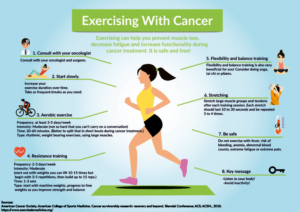Cancer is developed when abnormal cell functional occurs. Cancerous cells can develop within all parts of the body and can invade surrounding and distant sites by spreading through the blood vessels and lymphatic systems. This damage and spread of abnormal cells can be a result of internal factors such as inherited mutations and environmental exposures such as tobacco smoke. If diagnosis and treatment are not administered in the early stages of the disease, cancer can be life-threatening. It is estimated that 151,000 Australians were diagnosed with cancer in 2021- which is over 400 per day. What’s more, almost 1 in 2 Australians will be diagnosed with cancer by the age of 85, with breast, lung and bronchus, prostate, and colorectal cancers accounting for almost 50% of all new cancer cases. Treatment for cancer normally involves surgery, radiation, chemotherapy, hormone, and immunotherapy. Due to the nature of cancer treatment attacking cancerous cells, healthy tissue can be damaged, which can create significant side-effects during and post treatment. Chemotherapy can cause a range of symptoms such as fatigue, loss of appetite, muscular weakness, nausea, bowel issues and shortness of breath. Furthermore, overall physical function is generally diminished, even among cancer survivors who are 5 years or more post treatment.
Whilst these side effects can impact function and quality of life greatly, exercise can be a great tool to help mitigate these effects. The potential benefits of exercise during and after treatment are significant, and research has proved its effectiveness. Exercising during chemotherapy can help ease side effects, such as fatigue and nausea, and can even help boost the immune system of those undergoing cancer treatments. The side effects of chemotherapy can sometimes make exercise tough, but its critical to be as active as possible during and after treatment. The benefits of an appropriately prescribed exercise program for this population include:
- Muscle mass, strength, and power
- Cardiorespiratory fitness
- Physical function and physical activity levels
- Range of motion.
- Immune function
- Chemotherapy completion rates
- Reduced anxiety and depression
Exercise Recommendations:
The following types of exercises are strongly advised.
Aerobic exercise: This is a great form of exercise to increase aerobic capacity and decrease the side-effects associated with anticancer therapy medications. This also helps with day to day tasks, as they make strenuous tasks easier. Furthermore, this ensures that heart, lung and muscular fitness are optimised.
Resistance exercises: Strength and functional exercises are strongly recommended, to assist with reduced physical function and improving strength that may have been lost.
Flexibility: Completing stretching or range of motion for all major muscle groups is important to address specific areas of joint or muscle restriction that may have resulted from treatment.
Considerations:
Whilst exercise has shown to provide numerous benefits for those undergoing or have had cancer treatment, it is important to remember the following.
It is recommended for people undergoing or post cancer treatment achieve 150 minutes of moderate intensity exercise, or 75 minutes of high intensity exercise every week. However, is important that for those who regularly exercise before treatment to potentially start at a lower intensity level, and progress appropriately. It is important to monitor symptoms and increase/decrease exercise frequency and intensity where needed.
If you have bony metastases, it is recommended to avoid impact exercises.
Patients receiving chemotherapy may experience fluctuating periods of sickness and fatigue during treatment cycles that require frequent changes to exercise prescription (e.g. modifying intensity and duration). It is advised to see an Exercise Physiologist to assist with tailoring your exercise during fluctuating periods.
Be aware of public spaces such as gyms, yoga studios as throughout treatment your immune system is often compromised. There may be times when exercising at home or a medical setting would be more advisable than exercising in a public fitness facility.
Overall, there is strong evidence that supports that the implementation of exercise brings with it reduced morbidity, improved function and quality of life and potential for improved survival, with very low risk of harm. Whilst multimodal, moderate to high intensity exercise is appropriate for most people with cancer, but appropriate exercise prescription needs to be targeted and individualised according to the patient, and the type of cancer that is affecting the individual.




